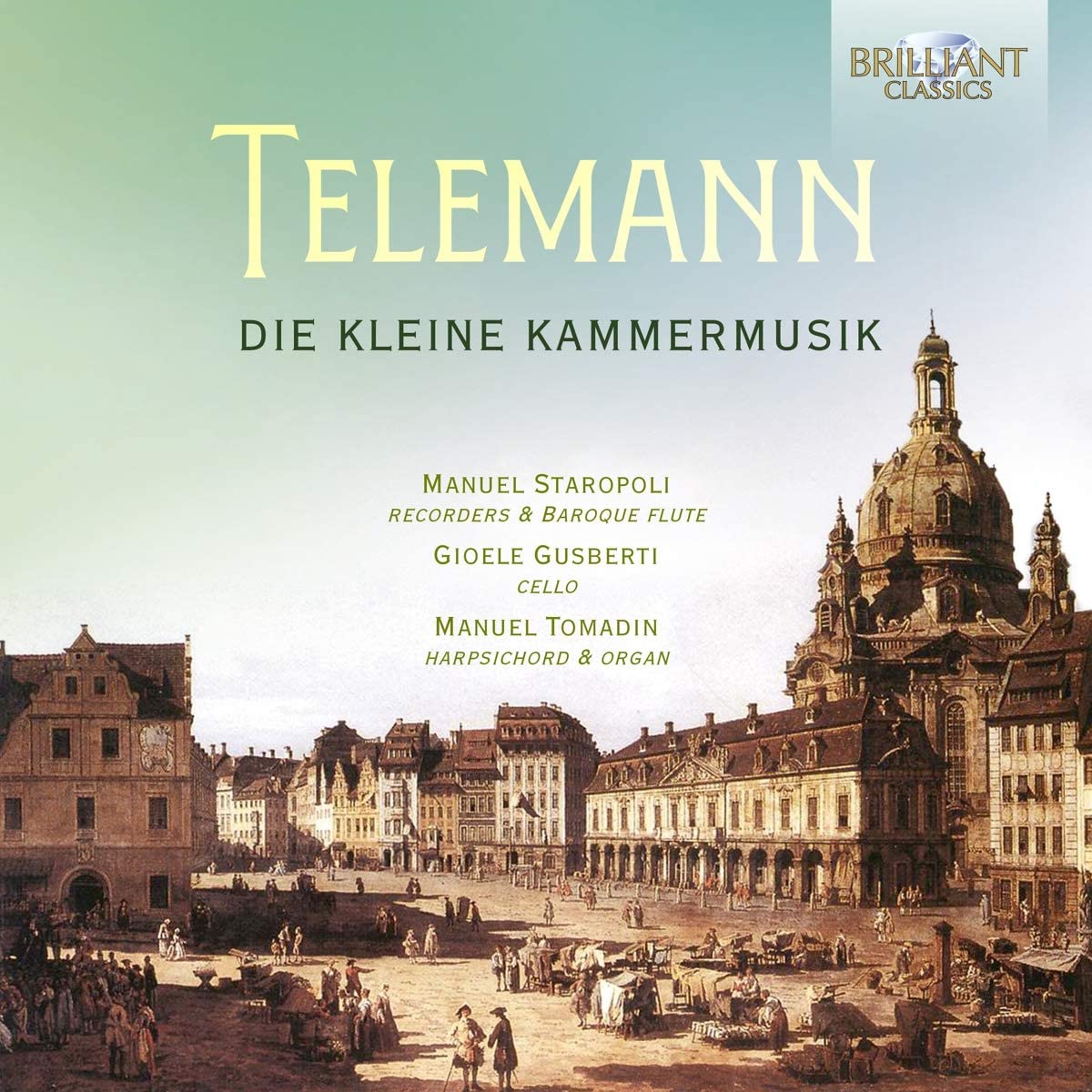Manuel Staropoli recorder/flute, Gioele Gusberti cello, Manuel Tomadin harpsichord/organ
71:32
Brilliant Classics 95517
Click HERE to buy this on amazon.co.uk
Telemann was never one to shy away from offering flexible performance possibilities and this set of partitas displays just this, being his second foray into the world of publishing (Die Herbst Messe/Autumn Fair Frankfurt) in 1716, seeking to appeal to specific players. Initial suggestions in the Preface state “for violin, flute, or keyboard” but *Besonders aber vor die Hautbois! (*”especially for the oboe!”) This is most often how these “light and singing” pieces are explored, openly aimed at four of the finest oboists of the age: Francois Le Riche, J. C. Richter, P. Gloesch and M. Boehme. When Camerata Köln came to record these for cpo 999 497-2 in 1996, they opted for a clever selection of instruments including oboe, offering a fine sonorous spectrum.
This latest recording makes use of three gauges of recorder, including the soprano, and flute to negotiate the partitas in their original order. In the first and fifth partitas, the organ comes into the continuo group with cello, adding a less familiar sonority within these familiar works. I would have liked to have heard the C minor or G minor works with this instrument for added gravitas. The performances of these “light and cantabile” partitas on this recording, opening with B flat major’s “Con affetto” pulses along, yet, with some oft rather strident recorder tones and flickering flashes of organ, with passing interjections of cello, it feels blithe yet somehow a tad perfunctory from the very opening bars, which on oboe comes over much subtler and far more comfortably expressive. The lovely lilting “Dolce” (which the composer cunningly re-crafted into the aria Kehre wieder, mein Vergnügung from Die Satyren in Arcadien), is very hastily dispatched! For the next three partitas, the harpsichord is deployed, and one senses a return to more familiar modes of accompaniment and slightly better articulation in the solo instrument, yet somewhat missing are the more “rounded” legato tones heard on many other recordings. This tidy, punctilious approach makes for just a hint of a blasé effect with fleeting shrillness creeping in. The organ in the fifth partita does feel much better, paired here with the flute. Some slightly bolder phrasing from the solo instrument may have lifted these florid passages, which the continuo element do handle well! Many eminent oboists have demonstrated their prowess on these well-crafted works with vivacity, engaging clarity, and yes, at times warmly “vocal” tones; other instrumentalists must strive for this sense of responsive zeal and feel for the sensual, expressive scope. Having heard easily more a dozen versions, especially on oboe (Paul Dombrecht, Hansjörg Schellenberger). Oddly enough, some of the qualities missing in the execution of these partitas were to be found in the D major cello sonata which closes the disc. In conclusion, wouldn’t be my run-to set and might sit somewhere halfway in a fairly largish pile of previous recordings.
NB: Very spurious/erroneous musicology on Page 7 regarding the orchestral versions of these partitas needs some serious revision; I have been in touch with the CD Company.
David Bellinger
